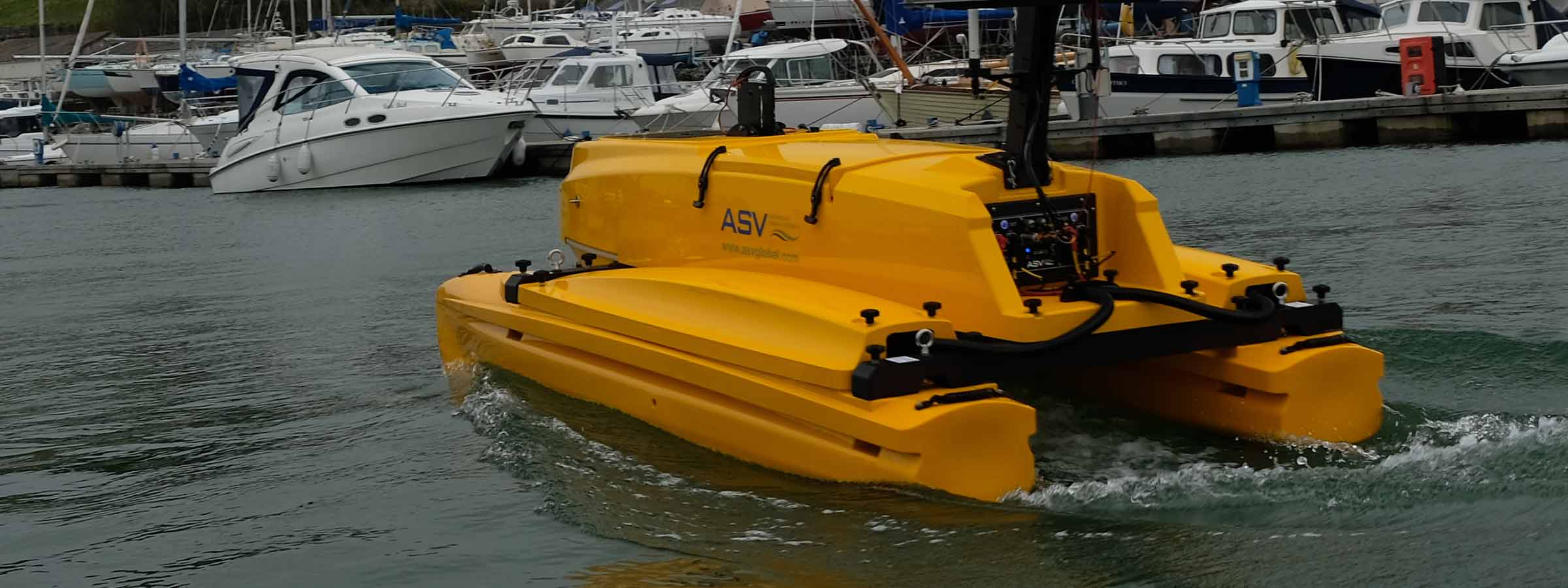Author: Ioseba Tena – Global Business Manager – Marine Robotic Systems
I keep telling everyone that’ll listen that now is a great time to be working with ocean robots. And, judging by OI 2018, it will only keep getting better. It’s not any one type of ocean robot that’s doing well, it’s all of them. Spurred by difficult economic conditions in the offshore industries and hoping to exploit resources with much finer margins, like fisheries or renewables, the industry is no longer just evaluating more autonomy. We are now using it commercially.
Everything Remotely Possible
I was impressed with the technology being integrated into observation-class ROVs. It used to just be a camera, now it’s common to see a multi-beam, a USBL, a DVL and even INS mounted on them. Obviously, I need to bring up the work we did at the dockside with our newly launched, very portable Micro-Ranger 2 USBL system. We used it to track the small VideoRay Pro4 and managed to demonstrate great accuracy in very challenging conditions. This is great. It means even the smallest form factor systems can be tracked. It’s not just a video anymore.
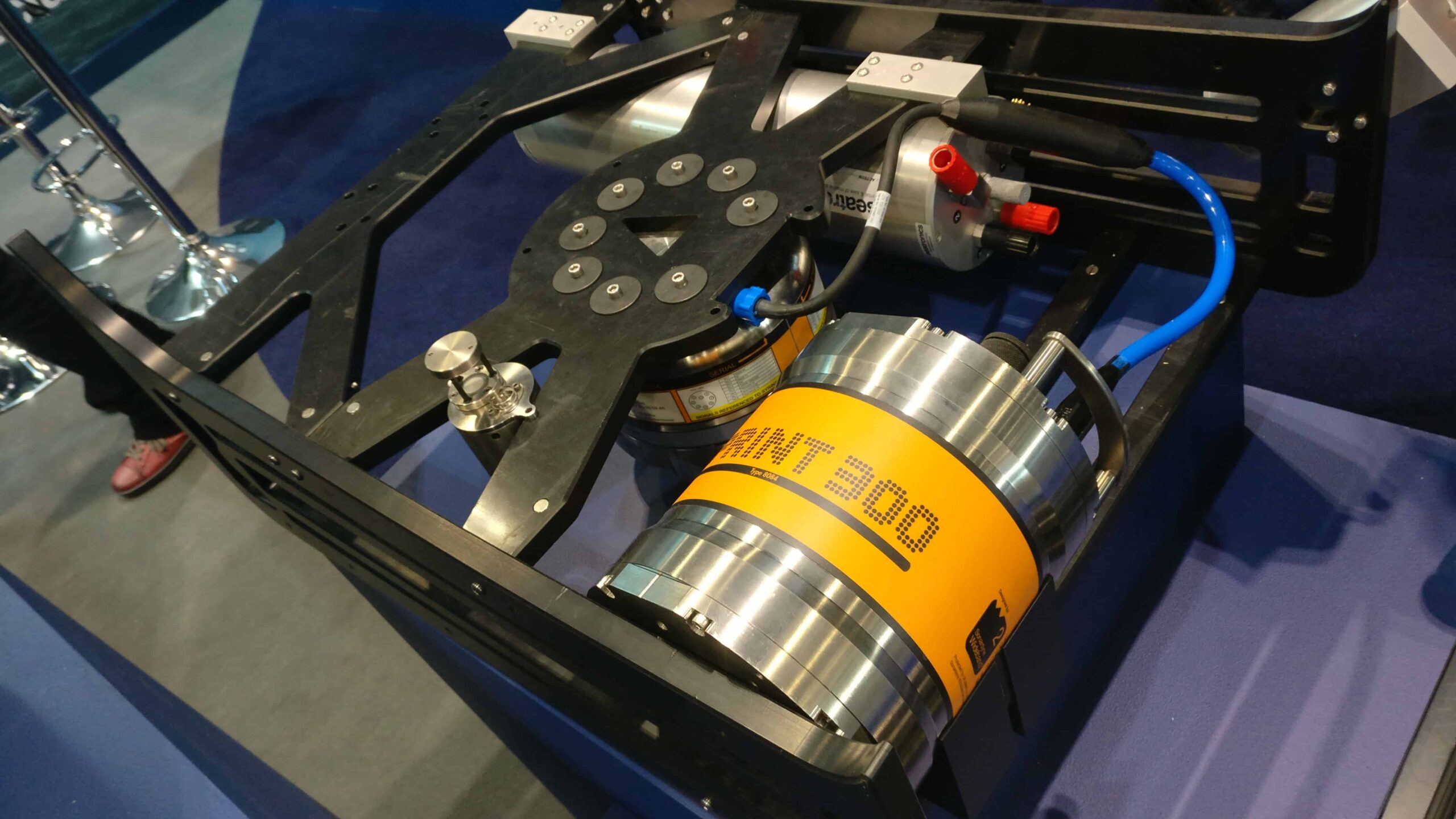
Our SPRINT 300 and Syrinx DVL fitted to the Seatronics VALOR skid for laser mapping
Leading up to the show, Sonardyne did some great work with Seaeye’s Leopard integrating our SPRINT-Nav. During OI many people showed interest in that integration. They wanted to find out what the combined INS/DVL can do for them. How does an INS and DVL combo add value to their robots? An ROV equipped with SPRINT-Nav is transformed. With SPRINT-Nav, it can be programmed to precisely hold station, to follow waypoints, to move at a constant speed. The data it gathers also increases in value as it can be accurately geo-referenced. With the right configuration and the right aiding sensors we can even perform dynamic laser mapping surveys. There’s an appetite for more capable robots in a progressively smaller form factor. New instruments and very clever manufacturing of ROVs are providing some substance to keep that appetite satisfied.
But the large work-class systems have not been forgotten. They can carry a substantial load. They can fit instruments that add value. Guess what? They are fitting them. It’s been a good year for INS sales. Our SPRINT is built on Ring Laser Gyro technology that offers a level of accuracy like no other gyro technology. It makes it ideal to help find North in record time – meaning no time lost to costly calibration procedures. It is also complimented brilliantly by Syrinx, a DVL which was born rugged and ready to withstand any subsea environment. The two systems together have seen a bumper year. At a time when ROV sales are down, savvy customers know that more capability translates into valuable data and operational savings.
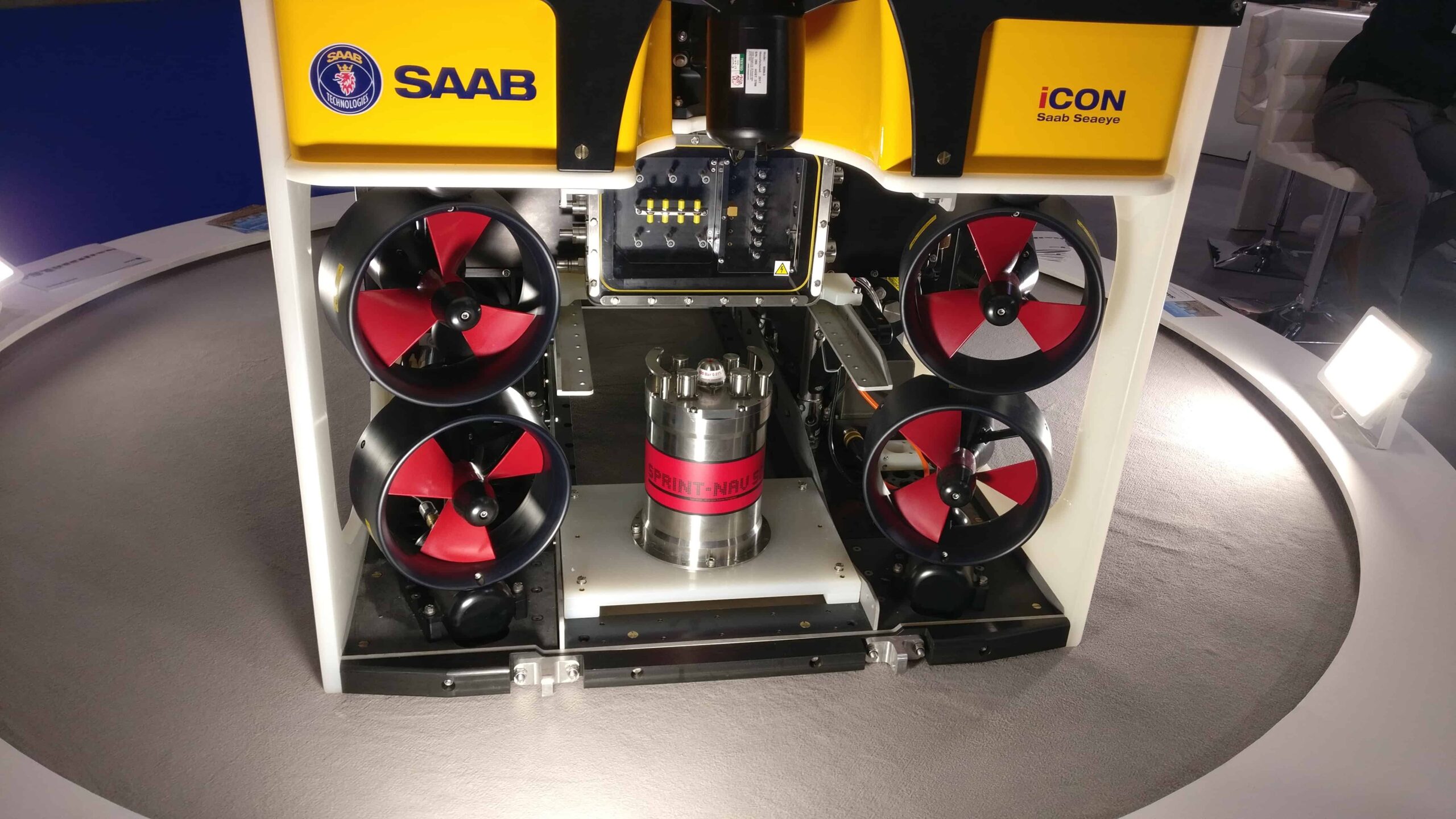
SPRINT-Nav 500 fitted to SAAB Seaeye’s Leopard ROV at Oceanology
Time for greater autonomy
When it comes to data, AUVs take the biscuit. They are very stable and can gather data at the sweet-spot for their payload sensors. Our Solstice Multi-Aperture Sonar can take advantage of that to generate amazing imagery of the seabed over a 200 meter swath. In the last six months we have been working hard with manufacturers and software companies to help them through the installation process. Soon we will be able to share some of the successes. However, beautiful data is just that: beautiful data. Valuable data is data which is georeferenced and timestamped. We need to know where it was gathered and when it was gathered. That’s when we can start to make sense of the data and what it means to us. For AUVs that has always been challenging, but we are improving. At this OI I was blown away by quality and ideas put forward by the XPRIZE finalists.The finalists were officially announced on the last day of the exhibition and their solutions where shared publicly through some of the talks. Two key themes were discussed: Innovation and a razor sharp focus on accuracy. From Arggonauts integrating our SPRINT and Syrinx to teams that are pushing 6G acoustics to the limit, I am hopeful that we will see them make a significant impact.
At the show we met with Kraken Robotics, who now operate the Thunderfish equipped with SPRINT-Nav, and their feedback has been very encouraging. Other manufacturers have also expressed interest on our Ring Laser Gyro approach. This is because when it comes to AUVs small improvements in navigation accuracy translate into massive gains in operational outcomes.
And following from our launch of Nano AvTrak 6 OEM last year at Ocean Business I am happy to report that we are now working with numerous manufacturers of small AUVs, accurate position updates are not limited to their bigger cousins.
Gateway to the Unmanned Oceans
We can count on Unmanned Surface Vehicles (USVs) to link the AUVs with the surface. In the future we will be able to conduct over-the-horizon operations with USVs linked to shore via satellite and AUVs linked to USVs via acoustics. If you stopped by our dockside demo you would have seen the C-Cat 3 from ASV demonstrating that concept. With the right tools a single USV could control a swarm of AUVs, at Sonardyne we have developed the acoustic tools to make that happen. But, it’s not just AUVs, need to box-in an LBL field? We have been doing that with ASV since 2015. It’s a commercially available solution that could have a real impact on lowering field development costs.
With our friends at Liquid Robotics, a Boeing Company, we are also doing some incredible work. They are using our acoustics to harvest data from subsea nodes at thousands of meters of depth in support of scientific operations. This concept was discussed at length on their booth. Together we are helping scientists understand the movement of tectonic plates with centimetric precision. This is something which we could only just dream about just a few years ago.
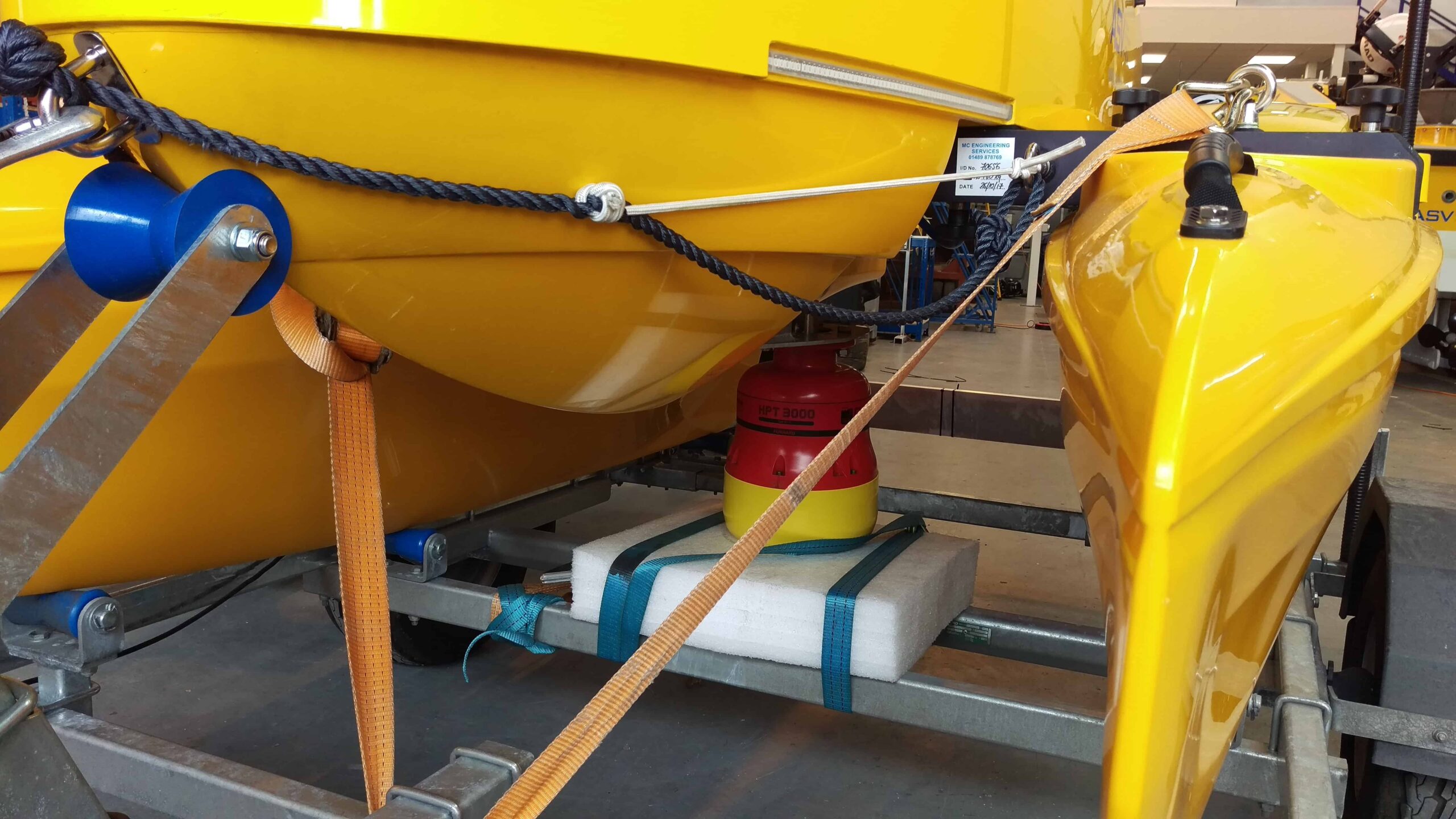
ASV C-Cat 3 with HPT 3000 USBL payload
Hybrid solutions for hybrid robots
The other stark realisation is that it’s horses-for-courses, in other words robots are being customised to serve a purpose. Yes, generic robots still exist and do well, but custom robots are now a common sight. Saab’s Sabretooth has been leading the charge for a long time now. It can work as an ROV and it can work as an AUV. Ideal for long deployments in an oil field, it can operate from a garage. It uses our 6G acoustics to guide itself in the field. Our 6G acoustics make a lot of sense as they are proven in a multitude of AUV deployments at all ocean depths and they can interact with 6G beacons and our 6G USBL systems. For developers this is a blessing. Their AUV becomes really easy to integrate into green and brown fields. It also uses our BlueComm free space optical modems to transfer large volumes of data and provide real-time joystick control even when there is not a tether linking it to a ship on the surface. They are not the only ones, Cellula Robotics are developing a new hybrid concept and also used BlueComm successfully to transfer data wirelessly.
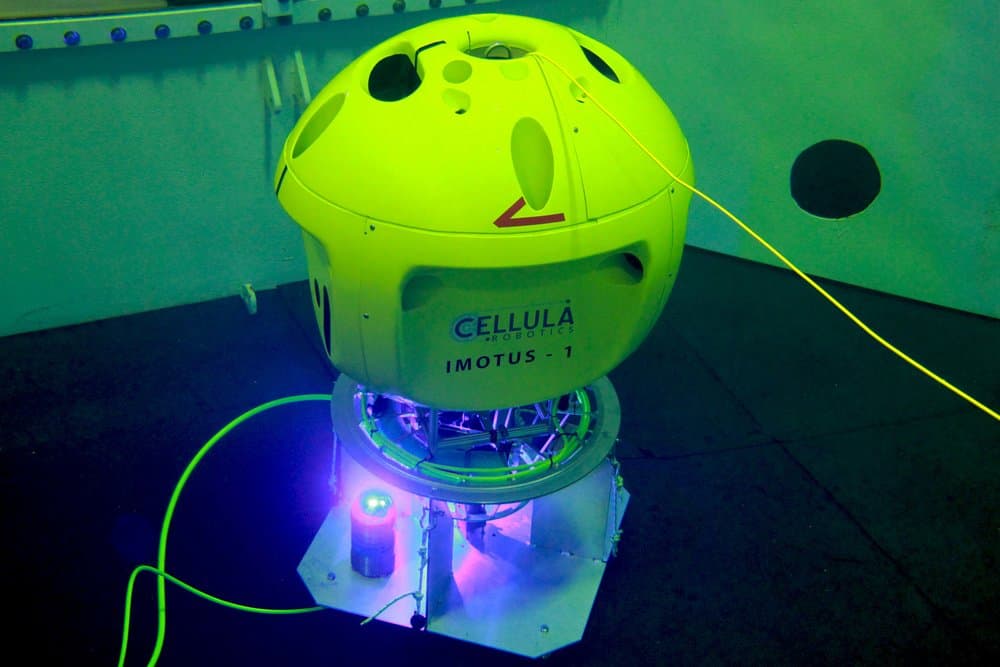
Cellula Robotics using BlueComm wireless communications
